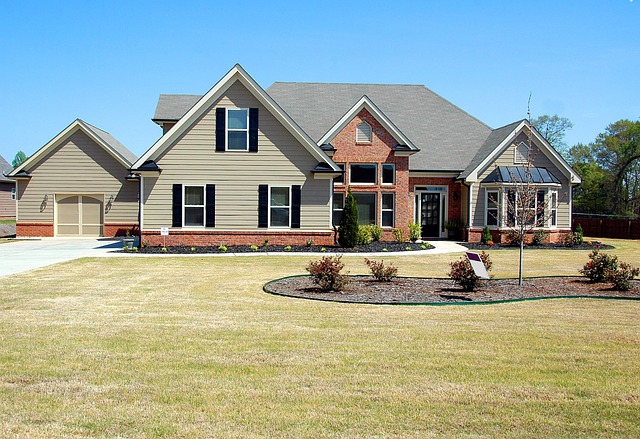What Every Homeowner Should Know About Property Value
Understanding what drives property value is essential for any homeowner, whether you’re thinking of selling, refinancing, or simply investing in your future. This article breaks down the key factors that influence your home’s worth, from location and market trends to renovations and upkeep. By gaining a clear picture of how property values are assessed, you can make smarter decisions to protect and grow your investment with confidence.

What Are the Primary Factors That Influence Home Value?
Several key elements work together to determine your home’s market value. The size and layout of your property play a fundamental role, with square footage, number of bedrooms and bathrooms, and functional floor plans significantly impacting worth. The age and condition of your home matter considerably, as newer properties or well-maintained older homes typically command higher prices.
Architectural style and unique features can either enhance or limit your home’s appeal depending on local preferences. Properties with energy-efficient systems, updated electrical and plumbing, and modern amenities generally maintain stronger values. The lot size and outdoor space also contribute to overall worth, with larger yards and attractive landscaping adding premium value in most markets.
How Do Location and Neighborhood Affect Property Pricing?
Location remains the most critical factor in real estate valuation, often accounting for the majority of a home’s worth. Properties in desirable neighborhoods with low crime rates, well-funded schools, and convenient access to employment centers consistently maintain higher values. The quality of local infrastructure, including roads, public transportation, and utilities, directly impacts pricing.
Neighborhood amenities such as parks, shopping centers, restaurants, and recreational facilities enhance property values by improving residents’ quality of life. Proximity to major highways, airports, or commercial districts can be either beneficial or detrimental depending on the balance between convenience and noise or traffic concerns. Future development plans in your area, including new schools, shopping centers, or transportation projects, can significantly influence long-term property values.
What Role Do Renovations and Maintenance Play in Home Value?
Strategic renovations and consistent maintenance are crucial for preserving and enhancing your home’s value. Kitchen and bathroom updates typically offer the strongest return on investment, as these spaces are primary decision factors for most buyers. Fresh paint, updated flooring, and modern fixtures can dramatically improve your home’s appeal without requiring major structural changes.
Regular maintenance prevents small issues from becoming costly problems that negatively impact value. Well-maintained HVAC systems, roofing, and exterior elements signal to potential buyers that the property has been properly cared for. However, not all renovations add equal value, and over-improving your home beyond neighborhood standards can result in diminished returns on your investment.
How Do Market Trends Impact Real Estate Values?
Real estate markets operate in cycles influenced by economic conditions, interest rates, and supply and demand dynamics. When mortgage rates are low, buyer demand typically increases, driving up property values. Conversely, high interest rates can cool market activity and stabilize or reduce prices. Local employment rates and economic growth directly affect housing demand in specific areas.
Seasonal trends also impact property values, with spring and summer traditionally being stronger selling seasons in most regions. Housing inventory levels play a crucial role, as limited supply with strong demand creates seller’s markets that drive prices higher. National economic factors, including inflation, unemployment rates, and consumer confidence, influence regional real estate markets to varying degrees.
What Unique Factors Impact Home Values in the United States?
The American real estate market has several distinctive characteristics that influence property values. School district quality carries exceptional weight in the United States, often creating significant value differences between neighboring areas with different educational systems. Property tax rates vary dramatically between states and localities, affecting both affordability and long-term ownership costs.
Climate considerations increasingly impact values, with areas prone to natural disasters like hurricanes, floods, or wildfires facing insurance challenges that affect marketability. The growing trend of remote work has shifted demand patterns, with some traditionally expensive urban markets seeing decreased demand while suburban and rural areas experience increased interest.
| Property Appraisal Service | Provider | Cost Estimation |
|---|---|---|
| Full Property Appraisal | Licensed Real Estate Appraiser | $400-$800 |
| Automated Valuation Model | Zillow Zestimate | Free |
| Comparative Market Analysis | Real Estate Agent | Free with listing agreement |
| Professional Home Inspection | Certified Home Inspector | $300-$600 |
| Property Tax Assessment | Local Tax Assessor | Varies by municipality |
Prices, rates, or cost estimates mentioned in this article are based on the latest available information but may change over time. Independent research is advised before making financial decisions.
Understanding property values empowers homeowners to make strategic decisions about their most significant investment. By considering location factors, maintaining your property effectively, timing market conditions, and recognizing unique regional influences, you can better position your home to maintain or increase its value over time. Regular assessment of these factors helps ensure your property remains competitive in an ever-changing real estate landscape.




